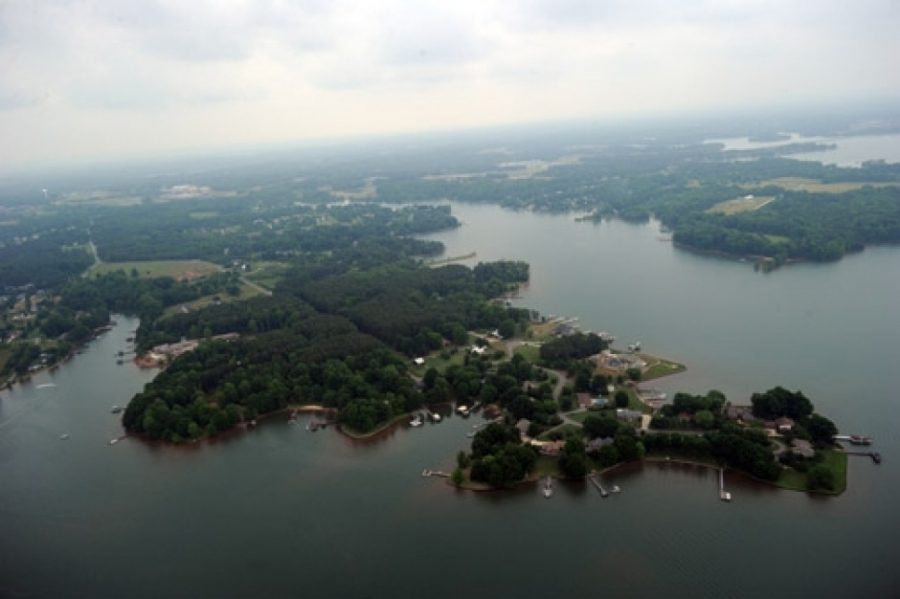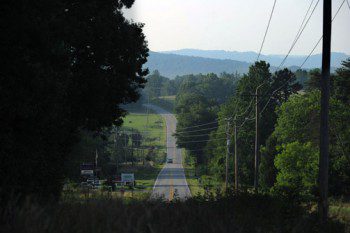Iredell County: An introduction

Introduction: Iredell, like other counties bordering Mecklenburg, is clearly divided economically and culturally between those areas that are closest to Charlotte, both physically and mentally, and the rest of the county, whose distance allows it to retain both its traditional character and its long-standing mistrust of Iredell’s big neighbor to the south. Elsewhere in the region, this geographic dichotomy has usually played itself out within the context of a more established, centrally-located town struggling to maintain its prominence over a growing suburban residential population on the edge of the county. What makes Iredell’s experience unique, however, is the emergence of Mooresville and the surrounding area as more than just another residential bedroom community of Charlotte, but as a major employment and commercial center in its own right. One of Iredell’s greatest challenges in the years ahead will be in how well it addresses the growing infrastructure needs of the southern part of the county, so crucial to Iredell’s economic future, without sparking rivalries that have the potential to divide the county along geographic lines.
Historical Overview: An excerpt from A Guide to the Historic Architecture of Piedmont North Carolina (UNC Press), Catherine Bishir and Michael T. Southern. (p. 444)
“Bordered by the Catawba River and traversed by the South Fork of the Yadkin, the “western district” of Rowan Co. became Iredell Co. in 1788, named to honor U.S. Supreme County Justice James Iredell of Edenton. Scotch-Irish and other settlers arrived from the 1740s onward, and during the French and Indian War they took shelter at the British outpost at Fort Dobbs (1756). Most families had small and middle-sized farms, where they engaged in mixed agriculture, complemented by gristmills, tanyards, and distilleries. The county retains many modern farmsteads with traditional log and farm buildings. In the 19th c. plantation gentry emerged, and some built imposing houses that combine traditional forms with stylish patternbook details. Both large and small farms are notable for single and double-crib log barns of the 19th c. The county possesses exceptional country churches and churchyards distinguished by locally carved gravestones, beautiful dry-laid stone walls, and iron gates. Highways, including I-40 and I-77, Lake Norman on the Catawba River, and spread from Charlotte have intensified development, but much of the county retains its rural character. The county has nine adjoin counties, supposedly more than any other in the nation.”

Iredell Today: The arrival of retail giant Lowes Home Improvement’s corporate headquarters to the Mooresville area brought thousands of jobs to an area that was already enjoying the economic benefits of being home to many of NASCAR’s premier racing teams, some employing hundreds. While the area also experienced the same residential boom that enveloped the rest of the Lake Norman area over the past decade, it was the arrival of these major corporate headquarters that began to solidify south Iredell’s status as an important employment center as well, bringing with it much-needed tax revenue to meet the demands of a growing residential population. In fact, the corridor stretching from southern Iredell and northern Mecklenburg eastward to Kannapolis (where the NC Research Campus is emerging some 15 miles away) is developing into one of the Charlotte region’s next major employment centers, joining uptown Charlotte, Southpark, University City and Arrowood, all of which are in Mecklenburg County.
With the area’s increased status as both an employment and population center, however, come many infrastructure challenges, primarily those associated with transportation and changes in commuting patterns. Former two-lane roads throughout the area have become clogged with traffic, while schools struggle to keep up with surging population growth. On any given workday, Interstate 77 between northern Mecklenburg and southern Iredell becomes a parking lot during rush hour. And yet, calls for infrastructure improvements to alleviate these problems are sometimes met with indifference or opposition from other parts of Iredell County.
Perhaps the most visible example of this was the recent debate over whether Iredell would help fund an extension of the Charlotte Area Transit System’s proposed commuter rail line, from the Town of Davidson in north Mecklenburg to the Town of Mooresville, or at least to the Lowes corporate campus in Mount Mourne. The decision by Iredell County not to support this extension made a significant statement – not only about Iredell’s willingness to take advantage of a unique opportunity to become the first county surrounding Mecklenburg to link up with Charlotte’s ambitious plans for passenger rail – but also about the relationship of southern Iredell to the rest of the county.
Certainly, Iredell’s future is not tied solely to that of the Mooresville area. Statesville’s position at the crossroads of two major interstates (the only city in the region outside of Charlotte that can make such a claim) should allow it to maintain its prominent role in distribution. Meanwhile, the county’s central location between Charlotte, Winston-Salem and the Catawba Valley corridor near Hickory gives Iredell certain advantages not enjoyed by other counties in the region. In the past, this allowed Iredell to develop close economic ties to the furniture industry in Hickory and Lenoir, helping Iredell’s economy to become less dependent on the textile industry than other counties. And as the Catawba Valley corridor now grows in importance for the technology sector (both Apple and Google are locating major “server farms” or data centers there), even more opportunities for economic diversification are likely. Yet, to underestimate the importance of southern Iredell to the rest of the county is to ignore its potential to establish Iredell as one of the Charlotte region’s next great employment centers, an opportunity that could be lost to other counties neighboring Charlotte if traffic congestion and other strains on the area’s infrastructure aren’t adequately addressed.

The geographic and cultural differences in Iredell are further heightened by the sheer length of the county, which runs some fifty miles north to south. In the middle is Statesville, the historic county seat that has long been Iredell’s established civic and cultural center, and where much of the county’s leadership is concentrated. At the northern end is one of the Charlotte region’s most important farming districts, a picturesque area of dairy farms set against the blue profile of the Brushy Mountains. Many residents in this part of the county have worked hard to protect their way of life, including some early efforts at farmland preservation along the South Yadkin River corridor.
It’s only natural that such a diverse set of communities would view one another with suspicion, seeing one area’s gains as another one’s loss. But the truth of the matter is that the futures of all Iredell’s communities are closely intertwined. Southern Iredell needs the support of Statesville and northern Iredell to make sure that inadequate infrastructure doesn’t curb the new growth that promises to diversify the county’s tax base. And the concentration of well-managed growth in the southern end of the county has the potential to lessen pressures for growth in the northern end, enhancing efforts there to preserve that part of the county’s traditional way of life.
Iredell’s official slogan is “Crossroads for the Future”, a nod to its location at the crossroads of Interstates 77 and 40. Today, the slogan seems as relevant as ever, as Iredell finds itself at a crossroads in the region’s future – a place where the same sort of growth (and related challenges) that leapfrogged to surrounding counties in greater Atlanta will now be tested here in the Charlotte region. Iredell County’s response to that opportunity will set the course for its future destiny relative to its peers in the Charlotte region. — Jeff Michael
Photos by Nancy Pierce
Iredell County links
Iredell County Articles & Publications







